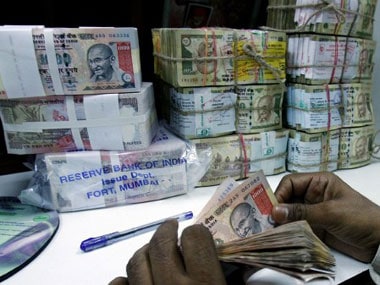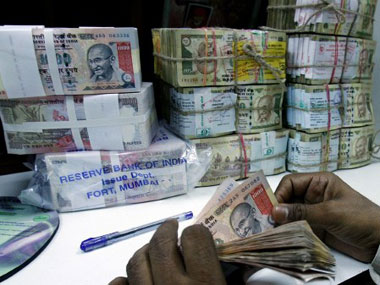The year 2014 will see strong FII flows into Indian bonds and this will lead to a rally in the currency. The reason is that on an absolute as well as relative basis, bonds offer good return potential for FIIs. Foreign investors have a limit of $81 billion for investments in bonds and have invested around $24 billion as of December 2013.
On an absolute basis, the yield differentials between global and domestic rates are high. Policy rates in the US, Eurozone and Japan are at levels of 0% to 0.25% while RBI policy rates are at 7.75%. Low policy rates in dollar/ Euro and Japanese yen currencies are keeping yields at levels of 0.1% to 3% in the three months to ten-year maturity scale. The highest yields are found in the US with ten-year bond yields at 3% levels and lowest yields are found in Japan with ten-year bond yields at 1.7 percent levels.
[caption id=“attachment_1300769” align=“alignleft” width=“380”]  AFP[/caption]
Government bond yields in India are 8.7-9% levels across the three-month to ten-year maturity scale. Hence yield differentials between dollar/euro/yen and the rupee are at absolute levels of 600-850 bps. Given that the Fed, ECB and Bank of Japan have pledged to keep rates at all-time lows well into 2015, global bond investors will be forced to look at higher yields offered elsewhere.
FIIs do not come wholeheartedly into bonds because of currency risk. The rupee is down 13 percent against the dollar in 2013 and high forward premiums of around 8.5% is preventing FIIs from capturing yield differentials that is available on bonds. However, given the positive outlook for the rupee in 2014 on the back of a 30% fall in current account deficit, $34 billion inflows through FCNR B deposits and bank borrowings and strong inflows of $8.5 billion into equities since September 2013, it will only be a matter of time before FIIs start receiving the high forward premiums offered in the rupee.
FIIs becoming positive on the rupee would lead to strength in the currency as well as bring down forward premium rates. A strong rupee coupled with falling forward premium rates will make bonds attractive to FIIs leading to strong inflows into the debt market. FIIs have invested close to $1 billion in bonds in December 2013 and this trend is likely to continue in 2014.
On a relative basis, the macros point to trades veering in the direction of selling low-yield currencies and buying high yield currencies. The US is seeing the Fed starting to lower amount of money that it is pumping into the system on the back of improved economic data. US ten year yields have backed up by 120bps in 2013 on the back of improvement in the US economy. German ten year Bund yields have risen by 50bps in 2013 as markets sold low yielding German bonds and bought into Spanish and Italian bonds that have seen ten year yields drop by 250 bps to 300 bps from highs.
At levels of 4.1% to 4.2% Spanish and Italian bonds do not look attractive compared to yields of 3% and 1.9% on US and German bonds. Global investors will start to look at countries like India where yields are higher and the governments and central banks are trying to put the house back in order.
Be positive on the rupee in 2014.
Arjun Parthasarathy is founder Investors are Idiots.com and INRBONDS.com.
Follow him on twitter #arjunparthasara


)
)
)
)
)
)
)
)
)



